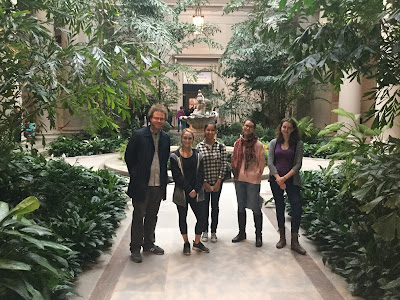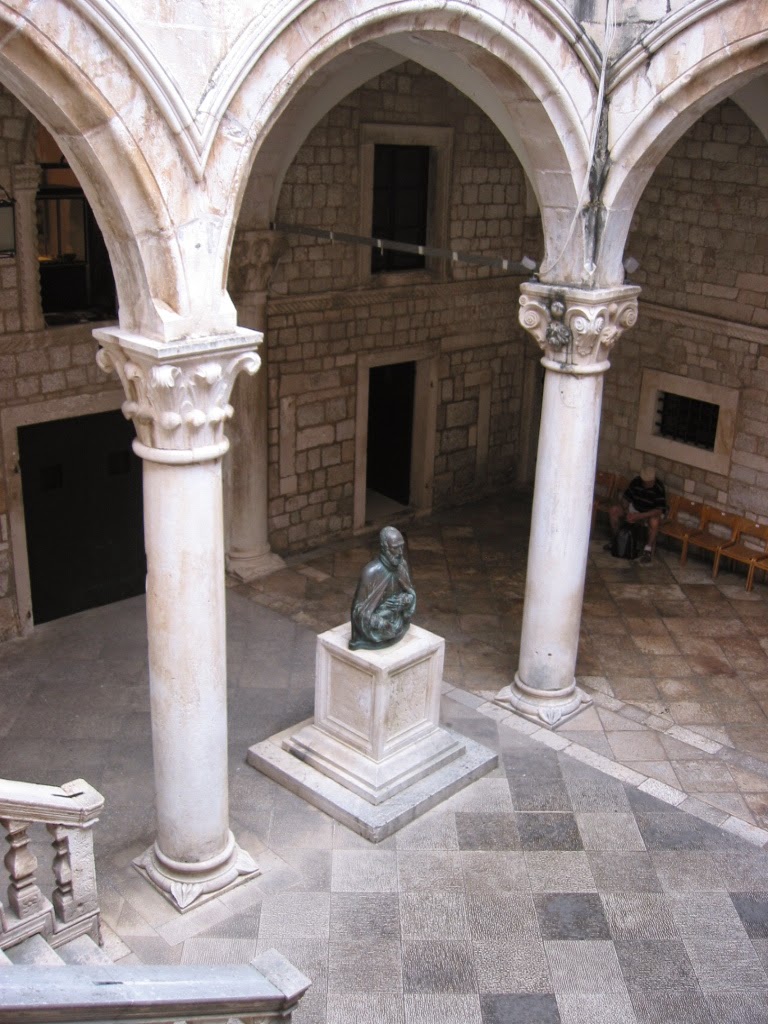 |
| ENGL 3530 group examines a painting. |
The National Gallery of Art—one of the finest institutions of its kind on the globe—is a mile and a half away from the George Washington University Campus. The gallery’s physical and financial accessibility (it’s free!), peacefulness, and gorgeous collection demand a visit, which is one of several reasons that ENGL 3530: The British Romantic Period (taught by Professor Daniel DeWispelare) always takes a class trip to this important institution in order to survey and discuss the collection of eighteenth- and nineteenth-century art.
 |
| John Martin, “Joshua Commanding the Sun to Stand Still upon Gibeon,” 1816. |
The logistics for this class journey are simple: over one weekend, we divide the total group of 25-30 people into smaller groups of five or six students and meet for 1.5-hour tours of the relevant galleries. Students are afforded the opportunity to visit the French neo-classical galleries and then progress through the museum’s collection of British Romantic art, as exemplified by stunning examples of landscape and portraiture by artists like J.M.W Turner, John Constable, Thomas Gainsborough, Sir Joshua Reynolds, John Martin, and Benjamin West, among others. The American collection corresponding to the same period has pieces of equivalent art historical value, especially the remarkable work “Watson and the Shark” by John Singleton Copley.
 |
| John Singleton Copley, “Watson and the Shark,” 1778. |
One of the most category-shattering experiences occurs when students visit what the National Gallery refers to as “Naïve Painting,” which is a strange term that corresponds to the more common designation “Outsider Art” or “Art Brut.” When in this gallery, and when looking at examples of brilliant artists who were never trained in any particular school of representative painting but who still managed to create gorgeous images (irrespective of whether they are accurate in terms of geometric perspective), students are able to see the productions of late-eighteenth- and early-nineteenth-century art as the truly are: a series of studied conventions and genera that create the very conceptions of beauty for which they are celebrated.
 |
| Edward Hicks, “The Peaceable Kingdom,” 1826. |
The tour ends with a visit to a small gallery that displays the American painter Thomas Cole’s four-painting series “The Voyage of Life.” These four paintings—entitled “Childhood,” “Youth,” “Manhood,” “Old Age”—allegorize an individual’s progression through various stages of life by depicting the ways in which visions of the natural environment metaphorize the mental experience of certain stages of life. In “Youth,” for example, a bright and fecund landscape echoes the painted figure’s optimistic view of the future, a view rigorously contradicted in “Manhood,” a painting wherein the central figure prays to a God occupying a dark and stormy sky in order to ensure that he will survive his passage down a series of dangerous riverine rapids. A Romantic interest in the lifecycle is palpable in these gorgeous creations, as is the sense that life (like history) progresses in discrete stages.
 |
| Thomas Cole, “Manhood,” Image #3 of “The Voyage of Life,” 1842. |
More than anything else, ENGL 3530’s visit to the National Gallery is an opportunity to trade impressions of visual art while building an intellectual community using the resources that Washington, DC, makes available. Though not all students have visited the museum before—sometimes this group includes even those seniors who have been living in our nation’s capital for three years or more!—most students report that the weekend time they devote to this activity is well spent. Many also report that they would like to visit the museum again soon.
 |
| ENGL 3530 after gallery visit, September 2015. |











